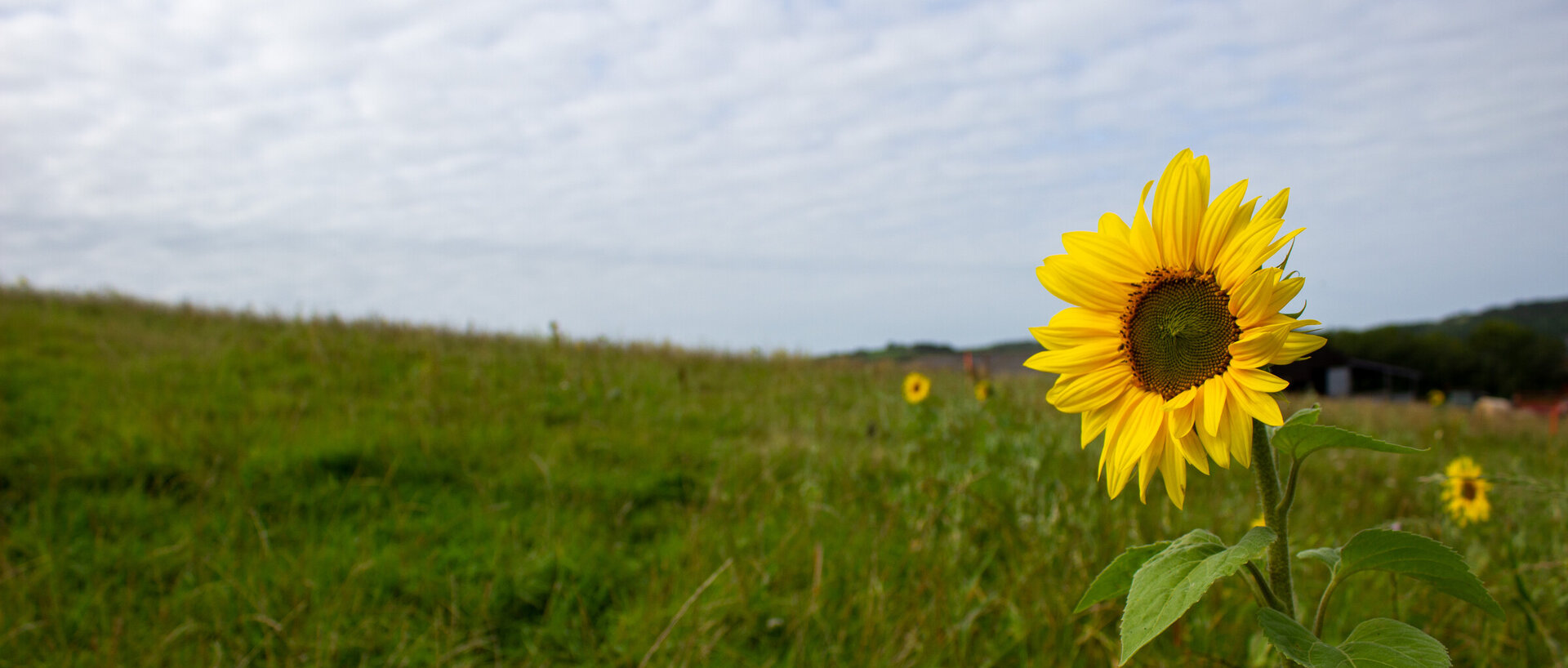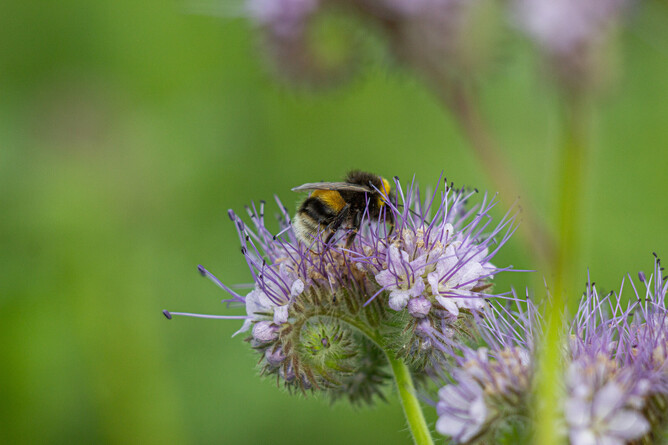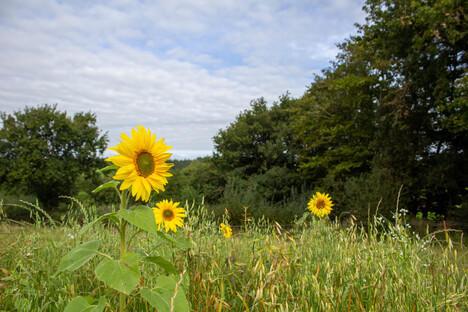Soil is the foundation of the ecosystem; without it, plants cannot grow and therefore animals cannot be sustained. In a single handful of healthy soil, billions of individual microorganisms are found, all of which work in harmony to provide ecological functions such as breaking down organic matter to make nutrients available for plants. Here I will explain in more depth the regenerative agriculture principles that we follow.
Pioneer in soil health - Gabe Brown
Regenerative agriculture recognises that to be able to have a healthy, natural, functioning ecosystem we must first focus on the soil. So many of the soils today are dramatically degraded so we must do more than just to sustain these soils. Understanding what works in nature enables it to be replicated in a farming environment, following the principles of regenerative agriculture.
According to Gabe Brown, a pioneer of the soil-health movement, the principles are (in no particular order):
- Minimal physical, mechanical and chemical disturbance to soil
- Keep soil covered
- Encourage diversity
- Keep living roots in the soil
- Integrating animals on the farm
You can hear more from Gabe Brown on the principles of regenerative agriculture through this video by WWF:
Minimising soil disturbance
Physical disturbance to the soil breaks up its structure and introduces a sudden rush of oxygen, both of which create unsuitable conditions for soil microorganisms, causing many of them to perish. Not only this, it can also make the soil vulnerable to erosion as bare areas of soil are often exposed. No till cropping ensures there is only a small amount of disturbance as the seed is slotted into the soil without ploughing.
Chemical disturbance through spreading chemicals onto the land in the form of fertilisers, herbicides or insecticides unsettles the balance of life and the soil’s ecosystem. The soil becomes dependent on fertilisers to provide it with readily available nitrates and other nutrients for the plants so at Redwoods we are gradually cutting out the use of fertilisers to allow our soil microorganisms to produce nitrates through nitrification. We use no pesticides to allow the ecosystem to work in harmony.
Keeping soil covered
Exposed soil is vulnerable to erosion, which removes vital nutrients from the land, limiting future plant growth. Giving pasture longer recovery times allows the plants to get taller and thicker, providing more cover over the soil. When the livestock are moved into pasture, giving them a smaller area for a day or less means much of the forage which they do not eat is trampled.
This layer of organic matter (along with the organic matter from their faeces) is cover for the soil when the plants have been grazed and provide less soil cover themselves. The organic matter also enables the pasture to grow more due to the nutrients it provides. Covering the soil also increases the water infiltration so the soil has a larger store of water and in periods of drought it can sustain crops or pasture for longer.
Encouraging Diversity
Diversity of all species should be encouraged, including that of livestock. Sheep and cattle target different plant species within the pasture, as well as providing different quantities of nutrients for the soil through their faeces. Other livestock such as chickens or pigs seek out insects, slugs and parasites as well as the pasture itself, eliminating the need for pesticides and reducing the disease burden on the other livestock.
Plant diversity can be encouraged by increasing recovery times of the pasture, as many flowers, herbs and forages require a longer time to grow than many grasses. These different species provide a more nutritious feed for the livestock as well as using different nutrients from the soil and returning other nutrients, keeping the soil microbiology healthy.
Wildlife diversity is increased too as a bigger variety of food and habitats become available for them, including for insects and soil microorganisms. They break down organic matter, making nutrients readily available for plant roots to uptake and storing carbon in the soil.
Keeping live roots in the soil
Roots support the soil microbes and bind the soil together, providing a shield against erosion. The plants also use their roots to put carbon into the soil through the process of photosynthesis. Cover crops can be used in arable land over the winter when there is not a cash crop growing, it also provides cover for the soil.
Overgrazing can cause plant roots to die; ensuring the pasture has sufficient recovery time prevents overgrazing as the plant can grow deeper roots.
Integrating animals
Animals provide large levels of organic matter and therefore nutrients through their faeces and trampling plants, allowing the plants to grow larger. This increases photosynthesis levels and nutrient content of the future crop (in an arable context). This produces more nutritious food, as well as providing food for livestock which, in turn, become food themselves, ensuring a rich, productive life cycle.
Steep ground and infertile soils make large areas of land unsuitable for growing crops for human consumption. These areas are most suitable for pasture. Being unable to digest grass, humans cannot eat it, so livestock are used to utilise it. Pasture can be harvested multiple times a year, through livestock grazing or making hay to feed them indoors in the wetter months, ensuring the land is productive and its fertility improved.
Adding livestock to the ecosystem
The introduction of livestock in regenerative agriculture, creates a more natural system. The type of livestock management will be influenced by the type of animals farmed, but will also be dependent on what the farmer wants to achieve within their operation. Holistic management enables the farmer to choose and adapt what methods suit their farm, while focusing on the health of the ecosystem.
Planned grazing, and especially Holistic Planned Grazing (such as we operate here at Redwoods), looks at the whole ecosystem. It considers livestock as just a small part which must be integrated in a way which benefits the ecosystem as a whole. They can be managed to increase the diversity of the pasture, soil microbes, wildlife and insect life. Leaving the pasture a long time to rest between grazing enables it to grow taller, providing more habitats for insects and other animals, as well as giving different plant species time to grow. High densities of livestock in an area of pasture trample plants which they do not eat, such as thistles, to enable other plants (which were previously outcompeted by the thistles) to grow. Pasture fed livestock benefit from the large diversity of plants; with their varied diet from the rich pasture they gain more nutrients than a monoculture of grass, which enables them to be healthier.
Keeping the livestock outside, on pasture, for as much of the year as possible reduces the fossil fuels required. As well as transporting feed to the animal, the dung must be taken to and spread to the field, rather than simply being deposited directly by the livestock onto the pasture. However, it is often not possible to keep all animals outside all winter. In wet weather, larger animals such as cattle poach the ground, exposing bare soil which is vulnerable to soil erosion.
Holistic planned grazing gradually increases the water infiltration of the soil by encouraging deeper plant roots and more worms, both of which break up the soil, creating more air spaces and pores, making the soil more sponge-like. This means more water can be stored in the soil so it takes more water to be fully saturated. According to the United States Department of Agriculture, increasing the organic matter of the soil by 1%, enables the soil to hold up to 25,000 gallons more water per acre. This means that over time the cattle’s grazing season can gradually be increased without harming the soil.
Open to interpretation
Gabe Brown describes his five principles in his video above. However, there are others in the industry who expand their own theories with fewer, or more, principles as the basis of regenerative agriculture.
Every farm is different and the adoption of principles will vary for each operation. There is no single solution for every regenerative agriculture system due to variation in climate, topography, soil structure and type of farming.
That is certainly true here at Redwoods and it is a constantly evolving practice. No two years are the same as we continually seek to improve our pasture and offer quality produce, whilst having a positive impact on our environment.


